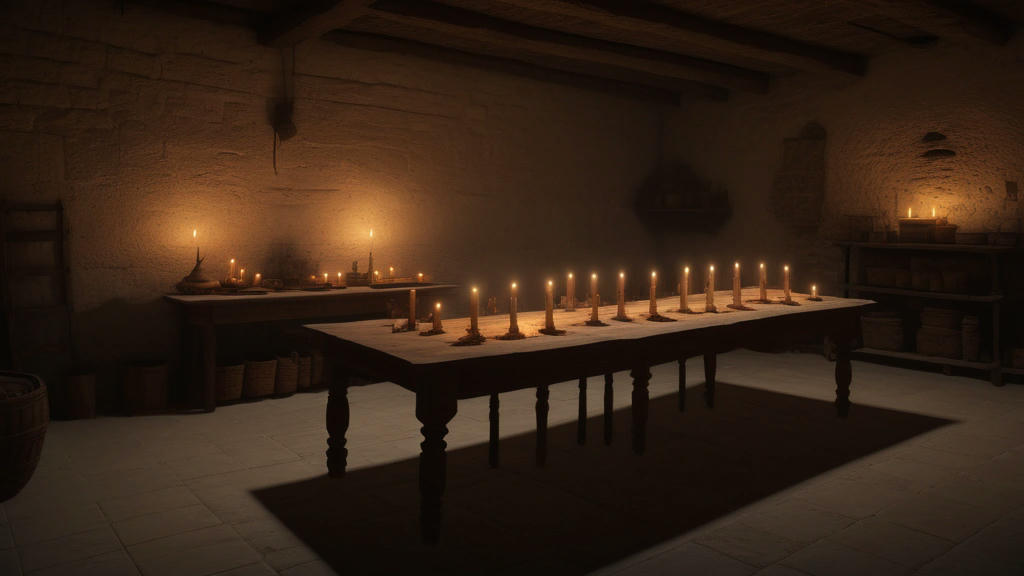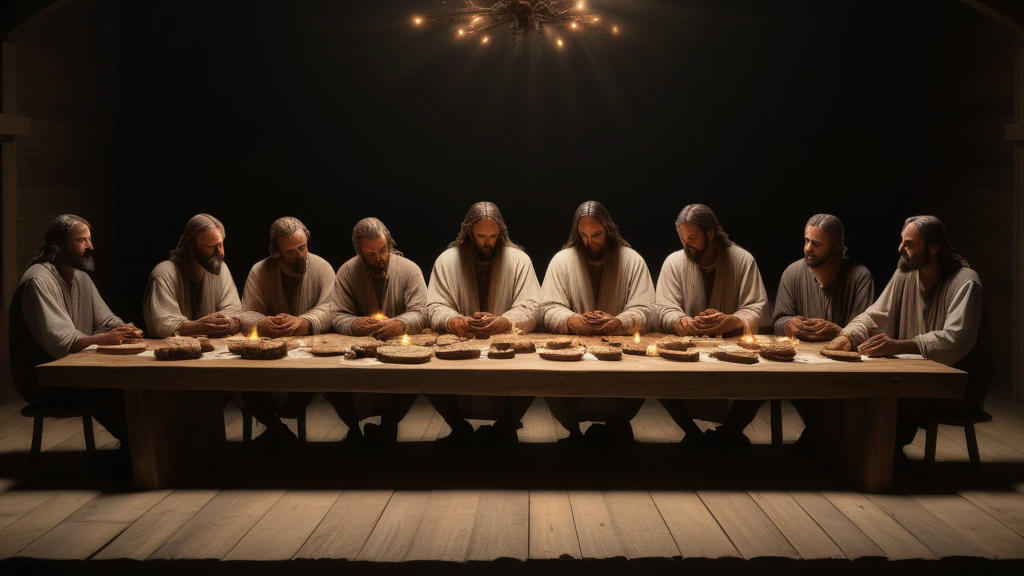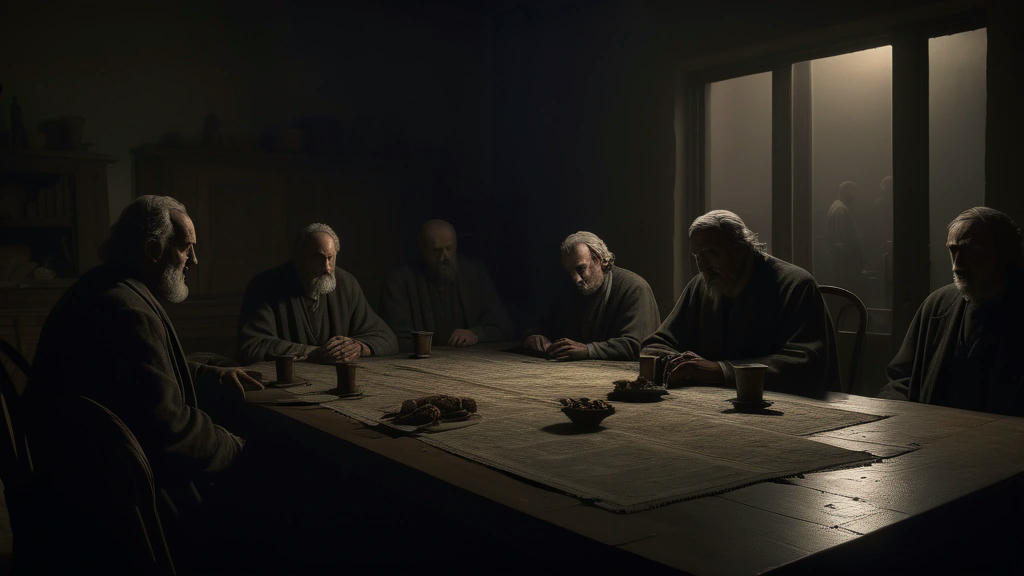In the annals of history, few events have been as scrutinized, analyzed, and mythologized as the Last Supper. Traditionally viewed through the lens of religious significance, this iconic meal has been immortalized in art, literature, and theology. However, what if we were to reframe this event through a different perspective? What if the Last Supper was not just a sacred gathering but also the first mystery murder dinner? This article delves into this provocative hypothesis, exploring the layers of intrigue, betrayal, and human drama that make the Last Supper a compelling narrative of suspense and mystery.
Setting the Scene: Jerusalem, 33 AD
The city of Jerusalem was a cauldron of political tension and religious fervor. The Roman Empire's iron grip on the region had created a volatile atmosphere, ripe for rebellion and intrigue. Against this backdrop, Jesus of Nazareth, a charismatic preacher and healer, had amassed a following that both inspired hope and incited fear.
The Last Supper took place in an upper room, a secluded and intimate setting that would soon become the stage for one of history's most dramatic moments. The twelve apostles, each with their own backgrounds, personalities, and motivations, gathered around Jesus for what they believed would be a Passover meal. Little did they know, this dinner would be their last supper together and the prelude to a series of events that would change the course of history.
The Cast of Characters
Jesus of Nazareth
The central figure, Jesus, was a man of profound wisdom and compassion. Yet, he was also acutely aware of the dangers that surrounded him. His teachings had challenged the status quo, making him a target for both the Roman authorities and the religious elite. As the evening unfolded, Jesus would reveal his foreknowledge of the betrayal that was to come, adding a layer of eerie prescience to the gathering.
Judas Iscariot
Judas, the most enigmatic of the apostles, was a man torn between loyalty and disillusionment. His motivations for betraying Jesus have been the subject of endless debate. Was it greed, as suggested by the thirty pieces of silver he received? Or was it a deeper, more complex disillusionment with Jesus' mission? Judas' presence at the table added an undercurrent of tension, a ticking time bomb waiting to explode.
Peter, James, and John
The inner circle of Jesus' followers, these three apostles were fiercely loyal yet deeply flawed. Peter, known for his impulsive nature, would later deny Jesus three times. James and John, the "Sons of Thunder," were ambitious and sometimes overzealous. Their interactions with Jesus during the meal revealed the human frailties that would soon be tested to their limits.
The Other Apostles
The remaining apostles, each with their own stories and struggles, contributed to the complex tapestry of the evening. Thomas, the skeptic; Matthew, the tax collector; Simon, the zealot; and others, each brought their unique perspectives and tensions to the table.
The Meal Begins
As the meal commenced, the atmosphere was charged with a sense of foreboding. Jesus, aware of the impending betrayal, chose this moment to impart his final teachings and to institute the ritual of communion. Breaking the bread and sharing the wine, he spoke of his body and blood, a poignant foreshadowing of the sacrifice he was about to make.
The Revelation
The turning point of the evening came when Jesus announced that one of the apostles would betray him. The room fell into stunned silence, each man grappling with the shocking revelation. The apostles began to question one another, their suspicions and fears bubbling to the surface. Judas, maintaining his composure, asked, "Surely, not I, Rabbi?" Jesus' response, "You have said so," was a cryptic yet damning confirmation.
The Betrayal Unfolds
As the meal drew to a close, Judas slipped away into the night, setting in motion the events that would lead to Jesus' arrest and crucifixion. The remaining apostles, unaware of the full extent of the betrayal, were left to grapple with their own fears and uncertainties. The sense of impending doom was palpable, a dark cloud hanging over the gathering.
The Aftermath
The Last Supper was not just a meal; it was a prelude to a tragedy that would unfold over the next few days. Jesus' arrest in the Garden of Gethsemane, his trial before Pontius Pilate, and his eventual crucifixion were all set in motion by the events of that fateful evening. The apostles, each dealing with their own guilt and grief, would scatter, their faith tested to the breaking point.
A New Perspective
Reframing the Last Supper as the first mystery murder dinner invites us to explore the human drama and psychological complexity of the event. It was a gathering marked by love and betrayal, faith and doubt, courage and fear. The characters, far from being one-dimensional figures, were real people grappling with extraordinary circumstances.
This perspective does not diminish the religious significance of the Last Supper; rather, it adds a layer of depth and nuance to the story. It reminds us that history is not just a series of events but a tapestry of human experiences, each thread contributing to the larger narrative.
Conclusion
The Last Supper remains one of the most iconic and enigmatic events in history. By viewing it through the lens of a mystery murder dinner, we gain a deeper appreciation for the complexities and contradictions that define the human experience. It is a story of profound significance, not just for its religious implications but for its exploration of the timeless themes of loyalty, betrayal, and redemption.
As we continue to study and reflect on the Last Supper, let us remember that history is not just about the past; it is a mirror that reflects our own struggles, hopes, and fears. In the end, the Last Supper is not just a story of what happened two thousand years ago; it is a story of what it means to be human.


